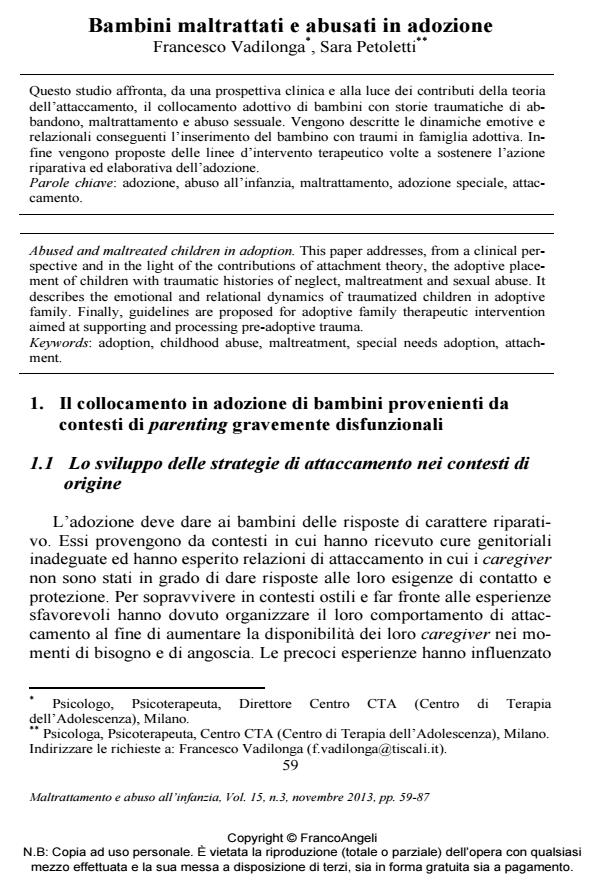Bambini maltrattati e abusati in adozione
Titolo Rivista MALTRATTAMENTO E ABUSO ALL’INFANZIA
Autori/Curatori Francesco Vadilonga, Sara Petoletti
Anno di pubblicazione 2013 Fascicolo 2013/3
Lingua Italiano Numero pagine 29 P. 59-87 Dimensione file 694 KB
DOI 10.3280/MAL2013-003004
Il DOI è il codice a barre della proprietà intellettuale: per saperne di più
clicca qui
Qui sotto puoi vedere in anteprima la prima pagina di questo articolo.
Se questo articolo ti interessa, lo puoi acquistare (e scaricare in formato pdf) seguendo le facili indicazioni per acquistare il download credit. Acquista Download Credits per scaricare questo Articolo in formato PDF

FrancoAngeli è membro della Publishers International Linking Association, Inc (PILA)associazione indipendente e non profit per facilitare (attraverso i servizi tecnologici implementati da CrossRef.org) l’accesso degli studiosi ai contenuti digitali nelle pubblicazioni professionali e scientifiche
Questo studio affronta, da una prospettiva clinica e alla luce dei contributi della teoria dell’attaccamento, il collocamento adottivo di bambini con storie traumatiche di abbandono, maltrattamento e abuso sessuale. Vengono descritte le dinamiche emotive e relazionali conseguenti l’inserimento del bambino con traumi in famiglia adottiva. Infine vengono proposte delle linee d’intervento terapeutico volte a sostenere l’azione riparativa ed elaborativa dell’adozione.
Parole chiave:Adozione, abuso all’infanzia, maltrattamento, adozione speciale, attaccamento
- Un'esperienza clinica di gruppo con genitori adottivi di bambini vittime di Esperienze Sfavorevoli Infantili Maria Gloria Gleijeses, Annamaria Scapicchio, in MALTRATTAMENTO E ABUSO ALL'INFANZIA 3/2018 pp.115
DOI: 10.3280/MAL2018-003007
Francesco Vadilonga, Sara Petoletti, Bambini maltrattati e abusati in adozione in "MALTRATTAMENTO E ABUSO ALL’INFANZIA" 3/2013, pp 59-87, DOI: 10.3280/MAL2013-003004